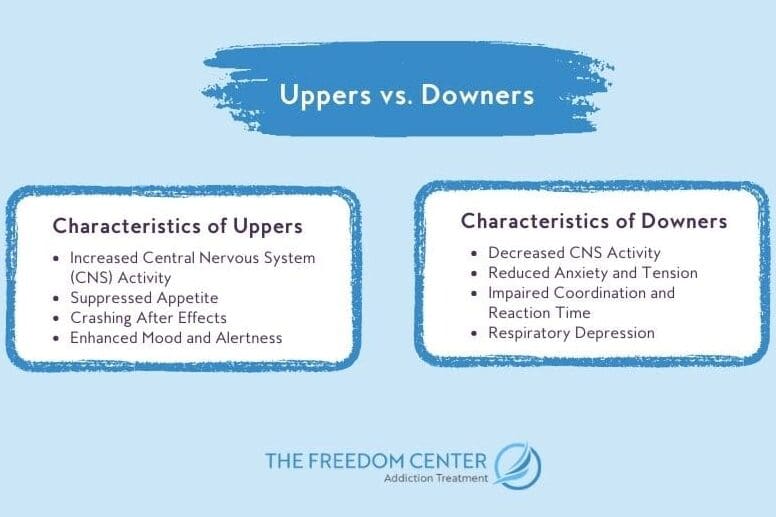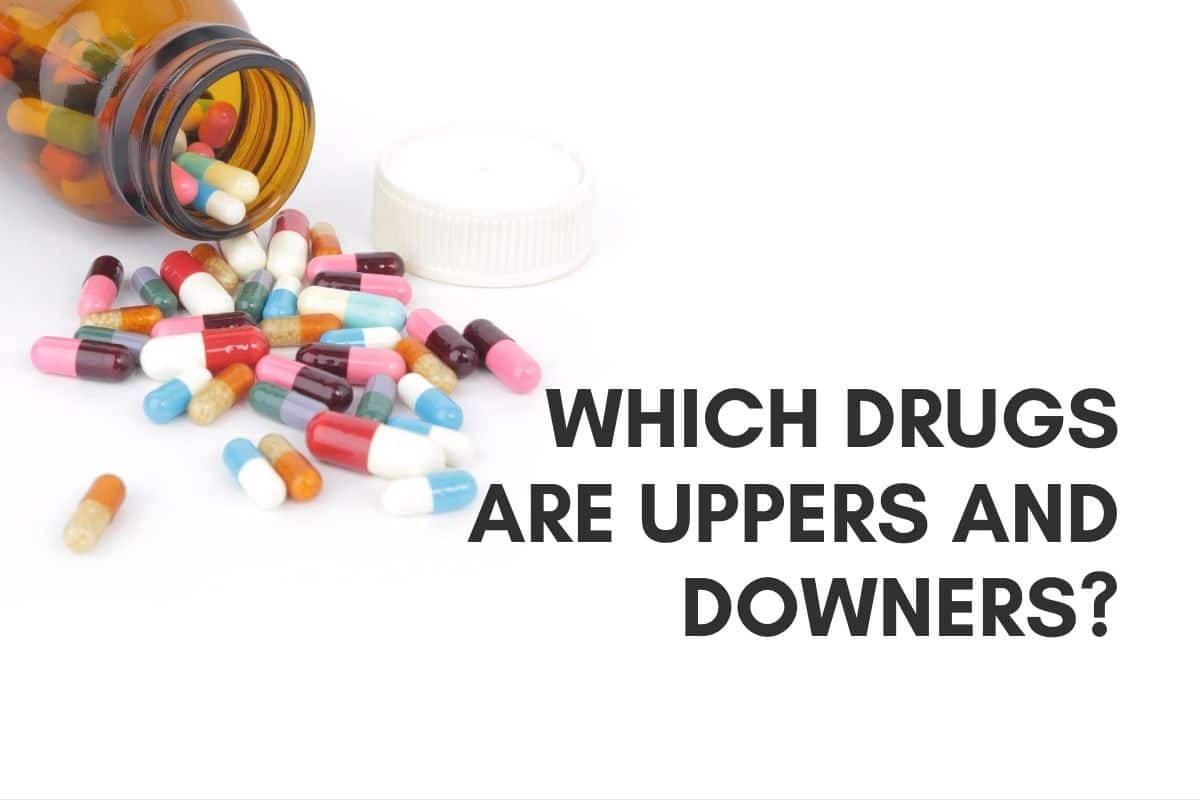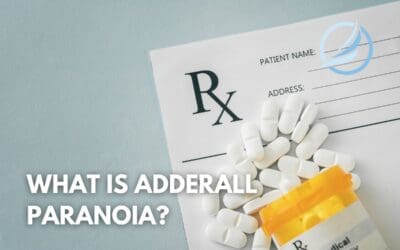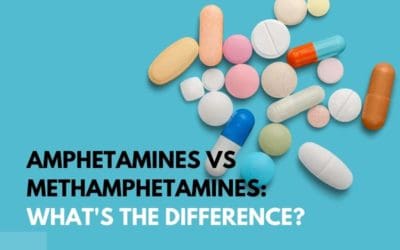Drugs go by a variety of different names including their generic name, brand name, and street names. “Uppers” and “downers” are informal drug classifications used to describe how a drug affects the central nervous system. “Uppers” are what’s known as stimulants while “downers” are what is classified as depressants. These two slang terms encompass many different substances, some legal, and some not.
As their contrasting names imply, uppers and downers have opposing effects on the body. Mixing them can be catastrophic, but so can doubling up on multiple drugs that have the same effect (i.e. using two uppers or two downers simultaneously). Something that both types of drugs have in common? Uppers and downers can be addictive and highly dangerous. Let’s take a closer look at uppers and downers, and why exactly they have these names.
What Are Uppers?
Uppers is a slang term used to refer to stimulants, a group of drugs that increase energy, alertness, and mood, and can also heighten feelings of self-confidence or sexual prowess. Stimulants work by speeding up the messages that are sent and received between the brain and the central nervous system (CNS).
The high that uppers produce is invigorating, but the result of a process that puts tremendous strain on the body. Uppers increased cardiovascular and respiratory functions to dangerous degrees that can overwhelm the body. If you’ve ever felt an adrenaline rush before, you likely felt shaky, weak, or dizzy once it passed. This is similar to what stimulant drug users experience once a stimulant wears off. Feelings of exhaustion and depression set in and users seek more uppers to ward off what’s known as a “crash”.
Legal stimulants, like coffee or ADHD medications, can help improve focus and concentration. However, take too much, and the side effect of overstimulation is likely to result in cardiac distress such as high blood pressure, irregular heartbeats, heart failure, or a stroke. Such an occurrence is even more likely with the use of illicit stimulants, which are extremely powerful and have no safe levels of use.
Examples of Uppers

- Adderall
- Ritalin
- Concerta
- Cocaine
- Ecstacy
- Methamphetamine
- Nicotine
Nicknames for Upper Drugs
One of the key ways to know what you or a loved one is taking is by knowing the nicknames of various uppers. Amphetamines like Adderall and Ritalin may go by nicknames such as speed, jelly beans, or addys. Meth often goes by crank, ice, or bump. Cocaine may go by coke, dust, snow, blow, or white.
What Are Downers?
On the opposite end of the drug side effect spectrum are downers. This slang term refers to CNS depressants, the types of drugs that produce a sedative effect by slowing down the messages sent and received between the central nervous system and the brain. They make the individual feel relaxed or tired and are often highly effective at minimizing feelings of pain. The natural opposites of uppers and downers decrease alertness and focus.
Legal sedatives help manage anxiety, epilepsy, and insomnia but are dangerous when abused. Illegal sedatives such as narcotics, are never safe to abuse in any amount and are notorious for being highly addictive.
Depressants slow central nervous system functions, such as breathing and heart rate. This can cause dangerously low oxygen levels in the body and result in a coma. Lack of oxygen is the biggest risk of abusing downers. When too great of a dose is taken, possible outcomes include overdose and death.
Examples of Downers
- Alcohol
- Benzodiazepines (Xanax, Klonopin, Halcion, and Librium)
- Barbiturates (Amytal, Numbutal, and Seconal)
- Heroin
- Fentanyl
- Prescription painkillers
Nicknames for Downer Drugs
Similar to uppers, knowing the slang nicknames for downers is extremely beneficial. Benzodiazepines like Xanax may go by nicknames such as blues, candy, or z bars. Barbiturates may also go by blues or bluebirds.
Cross Drug Use: Combining Uppers and Downers
Knowing how uppers and downers exert opposite effects on the central nervous system, you can imagine what a bad idea it is to combine them. However, it’s very common for recreational drug users to mix uppers and downers, and take alcohol and energy drinks for example, a staple at most bars.
People mistakenly believe that the effects of one type of drug will cancel the other out. They often do this to “even out” accidental overuse of one type of drug (conversely, most people continue using the same or same type of drug to stave off the come down from their high) or simply to manipulate their mental state. Both the physiological and neurological consequences of such actions can be devastating.
An Example of the Dangerous Cycle
Say, for example, a person starts with the use of a downer that reduces any anxiety and produces a sense of relaxation. When their energy levels drop, they take a stimulant in order to continue participating in the party or another event. This creates a cycle that could lead to significant drug use and drastically increases the risk of overdose or death. It is critical to know which drugs are uppers and downers to avoid this combination.
Reasons to Avoid Mixing Drug Types
- It’s easier to overdose: Stimulants mask the effects of depressants, which significantly increase the odds of someone taking too much of a drug, or overestimating the limits of how much their body can handle.
- The drugs stay in your body longer: Both uppers and downers disrupt the digestive tract (an oft-forgotten part of the central nervous system) which can result in a slowed metabolism, and thus, slower processing of drugs in the body. This increases the odds of toxic build-up of either compound.
- Your heart will suffer: Combining uppers and downers will pull your body in all directions and your heart may not be able to cope. This increases the likelihood of irregular heartbeat and heart failure and is just one example of the complications your body can experience.
Getting Help for a Stimulant or Depressant Addiction
Timing is a major factor in preventing long-lasting consequences from abusing these types of drugs. While it’s always recommended against to use of any sort of recreational drug, it is never recommended to stop doing so cold turkey. This itself can be dangerous and put you in harm’s way with a number of risky withdrawal effects.
If you or a loved one is struggling with an addiction to uppers, downers, or both, we can help. Contact The Freedom Center today and speak with one of our admissions specialists about amphetamine detox.

































